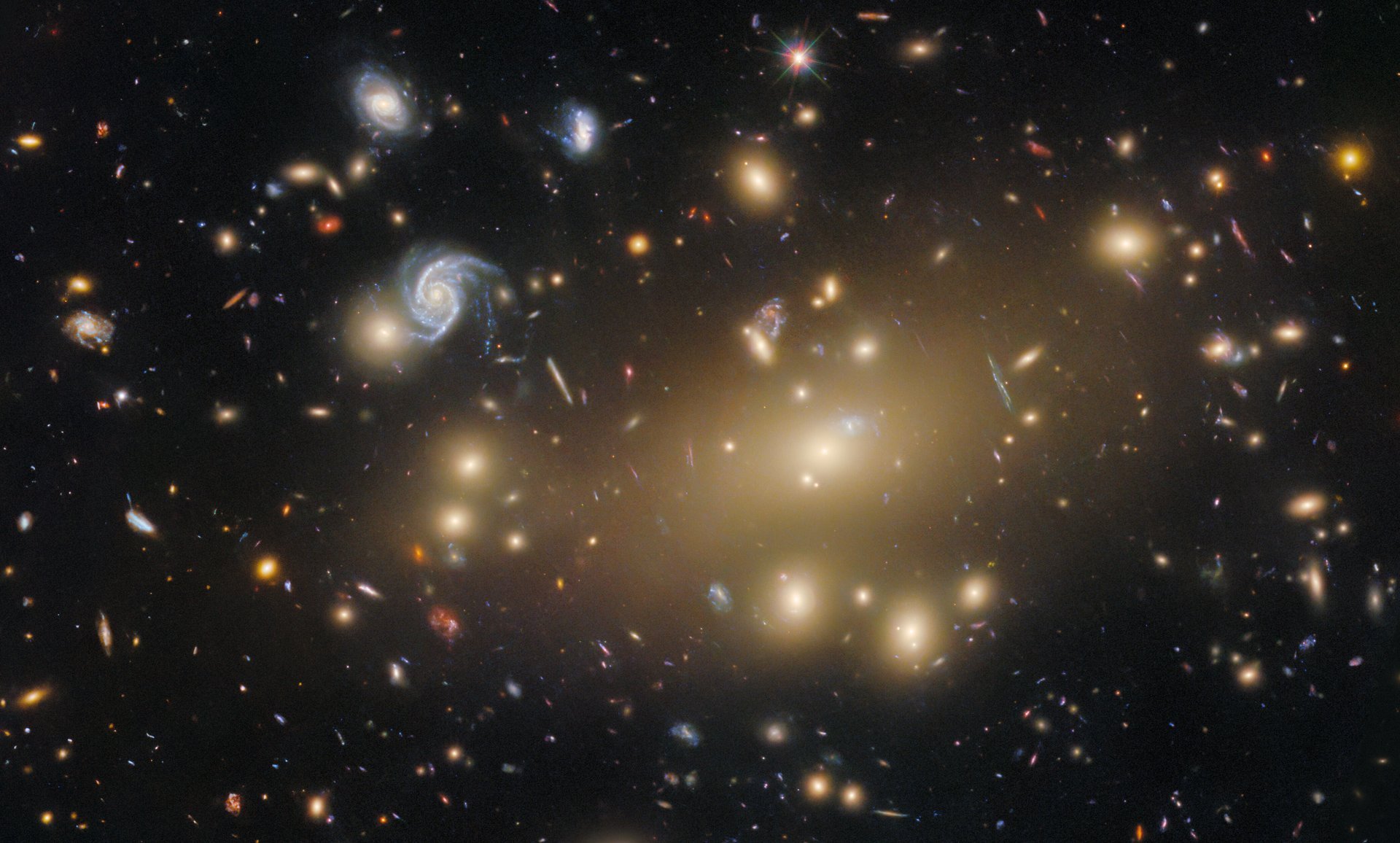The Hubble Space Telescope continues to observe the cosmos and deliver some of the most breathtaking views of astronomical objects ever taken. The telescope recently imaged Abell 209, a galaxy cluster located 2.8 billion light years away in the constellation Cetus. The picture was selected as the NASA/ESA Hubble Space Telescope Picture of the Week, as it beautifully illustrates the galaxies that constitute it and the lensing effect it has surrounding space. The galaxies appear as brightly shining points in the image, emitting light that appears to take an oval shape, crowded around a particularly massive one.
The image also shows several similarly sized spiral galaxies that appear blueish and have various shapes. Other smaller, more distant galaxies can be seen around the cluster’s edges and the brightest galaxy in the center-right. These appear warped and elongated by the gravitational lensing effect produced by the cluster. But there’s far more to observe in this cluster than even the venerable Hubble can see. For example, while the cluster contains over 100 galaxies separated by millions of light-years, the space between is filled with hot, diffuse gas that can only be seen in X-ray wavelengths.
There’s also the unseen mass that permeates this cluster and accounts for roughly 80% of the Universe’s mass: the elusive Dark Matter. This mass does not interact with normal, “luminous” matter (i.e., in visible light), and can only be inferred from the gravitational interactions in and around the cluster. Its influence can also be gauged based on how much it warps spacetime, distorting and amplifying light from more distant objects (aka, gravitational lenses). This makes observations of large-scale cosmic structures useful to astronomers because they can provide insight into the fundamental mysteries of the cosmos.
The Hubble Space Telescope has helped astronomers to chart the evolution of the cosmos. Credit: NASA
This includes Dark Matter and Dark Energy, which account for 25% and 70% of the mass-energy density of the Universe (respectively). Gravitational lenses allow astronomers to map the matter distribution of galaxies and clusters, leading them to constrain the influence of Dark Matter. They also allow astronomers to peer deeper into the cosmos, allowing for distance measurements that can help them measure the rate of cosmic expansion (the Hubble Constant) and the influence of Dark Matter.
Furthermore, these clusters and their gravitational lenses are an effective means of testing Einstein’s Theory of General Relativity and other theories of how our Universe evolved. In this respect, Hubble continues to live up to its legacy and is still helping astronomers explore the deeper mysteries of the cosmos.
Further Reading: ESA
